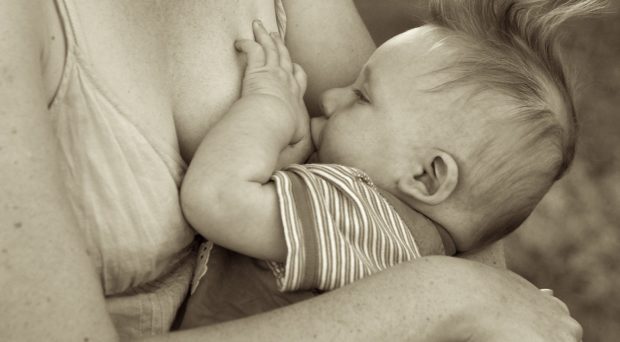
In early August 2019, Australian health ministers quietly released a National Breastfeeding Strategy (ANBS). Its bold vision is a society which ‘values’ breastfeeding and doubles its breastfeeding rates. Yet more breastfeeding does not come free. Are governments ‘willing to pay’?
Who invests in valuable milk production?
Australian governments are demonstrably ‘willing to pay’ for dairy production. Historically they have invested heavily in dairy support policies and subsidies and responded strongly to ‘$1 milk’ hurting dairy producers financially.
Medical scientists see breastmilk as ‘personalized medicine’, with a commercial value exceeding $100-$300 a liter. Yet governments have failed to invest in breastfeeding. As a result, fewer than one in twenty Australian children are breastfed as recommended by the WHO; exclusively with human milk for the first six months and continuing to two years and beyond. This denies a healthy diet to nearly a million Australian infants and young children annually.
Invisible working women
The estimated economic value of the 44 million liters of milk produced by Australian mothers is large, at over $4 billion a year. Globally, this food source is enormous, but supply is threatened by governments such as in China and Australia investing to expand formula markets. A crucial problem is that breastfeeding women are not recognized as food producers. Their lactation work is unmeasured in economic or food system statistics. Their production is invisible and under-resourced.
Exclusive breastfeeding – and Australia’s human milk supply – has been declining, or at best stagnating, in the past decade. Proportionally more mothers begin breastfeeding, but milk formula sales are booming. There are rising rates of early supplementation. Human milk for human babies is being displaced by $1 dairy milk, made by cows for calves. In China, breastfeeding rates halved in the past decade.
This is an economic as well as a health issue. Ignoring the economic importance of breastfeeding has increased health costs, reduced national economic productivity and allowed a key economic asset – women’s capacity to breastfeed infants and young children – to dwindle.

Economics 101 – GDP does not measure the total economy
The Global financial crisis in 2007 fuelled longstanding concerns about whether official statistics properly measure economic progress. Feminist economists argued that focussing on GDP diverts policymakers’ attention from important non-market productive activities including unpaid domestic and care work.
Two economic Nobel Prize-winners, Joseph Stiglitz and Amartya Sen, have agreed that excluding human milk production from GDP distorted policies and priorities, as human milk met international criteria to be counted in GDP as a food commodity.
An important OECD Statistics study has now revealed that GDP growth in countries like the US, the UK, and Canada was much lower (0.1-1.8 percentage points less) than measured in official statistics since the 1980s. This was mainly because the apparent GDP boost from growth in childcare services was not real but simply substituted for the unmeasured and unpaid childcare previously provided by households as women took up paid jobs.
Health cost savings and long term labor productivity
The health system and economic costs of premature breastfeeding cessation are immense. A recent World Bank study found that the global costs of not breastfeeding are $1 billion a day. These estimates built on previous work such as for Australia, the UK, Indonesia, Mexico, and countries in Southeast Asia. Cognitive deficits from insufficient breastfeeding cost Australia around $6 billion a year in lost workforce productivity, and chronic disease among adults fed formula as infants continue to burden Australia’s health system. Studies in the United States reveal $17 billion a year in avoidable economic costs such as from maternal breast cancer. Such estimates understate the economic costs by ignoring the time costs to women of caring for sick dependents. Lack of time use data is a key constraint on informed policy.
Budget policies on breastfeeding
The new ANBS contains no plans to improve paid maternity leave. The status quo suits Australia’s baby milk industry. In 2016, industry strategists reported that changing Australia’s Paid Parental Leave scheme would significantly affect the baby food market, by influencing whether breastfeeding was ‘a feasible option’ and homemade baby food was ‘a practical choice’. More specifically,
“Changing paid parental leave from 18 weeks to six months would increase the ability of Australian mothers to breastfeed while assisting the return to work would have the opposite impact. The anticipated result of this will be decreased breastfeeding rates and Australian mothers turning to milk formula as a substitute.”
Exclusive breastfeeding takes around 20 hours a week of a mother’s time. This is a significant economic cost for women. A recent study shows time pressures on Australian families are intensifying. Paid maternity leave is proven to help to breastfeed but recent policy discussions prioritize extending paternity leave. Clear evidence on whether more paternity leave reduces women’s domestic work burdens is lacking, but time-use studies show leisure time is decreasing for Australian women and increasing for Australian men. Where should budget priorities lie?
Investing in breastfeeding – addressing economic and commercial drivers of poor infant nutrition
Breastfeeding is now acknowledged as a smart investment in people and in economies. Several studies calculate the returns on ‘investing in breastfeeding’. Since 2015 several have focussed on paid maternity leave as a tool to align policies encouraging maternal labor force participation with breastfeeding recommendations.
This policy agenda moves beyond haranguing mothers about the benefits of breastfeeding. Nevertheless, who pays for the time costs of breastfeeding remains a key issue. There is no free lunch here. Like the dairy producers, women and households need resources of time and money as well as policy support to sustain productivity.
Governments must show they are ‘willing to pay’ by investing in breastfeeding if they really do ‘value’ it.
Comments